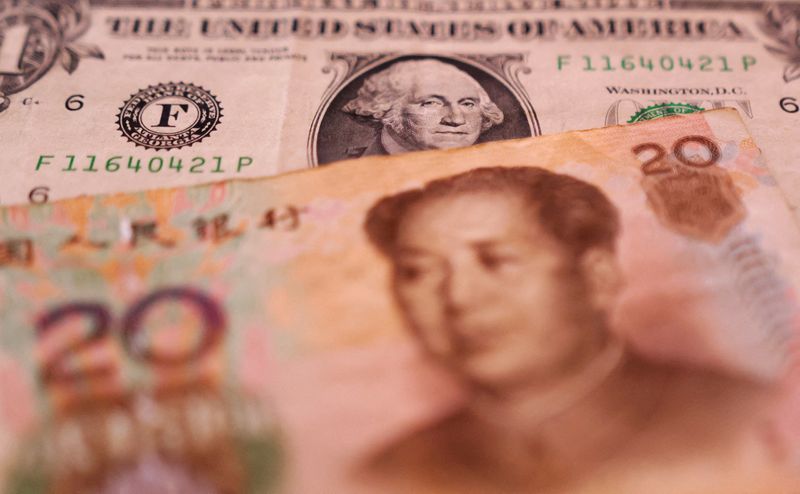By Georgina Lee
HONG KONG (Reuters) - The yuan has lost nearly 5% of its value against the dollar this year and in recent weeks China's central bank has begun pushing back on the slide, fixing the currency's daily trading band at stronger-than-expected levels.
Some analysts suggest the stronger fixing is due to the "counter-cyclical factor" (CCF), a tweak to the formula for setting the trading band to give authorities more latitude.
Here's a look at how that works:
WHAT IS THE DAILY FIX?
The yuan is not a fully-convertible currency and its onshore exchange rate is a managed floating rate. Spot dollar/yuan is allowed to trade 2% either side of a fixed midpoint each day.
The midpoint is calculated by the China Foreign Exchange Trade System (CFETS), a unit overseen by the People's Bank of China prior to the onshore market opening at 09:30 a.m. (0130 GMT)
HOW IS IT CALCULATED?
CFETS seeks quotes from a panel of 14 market-making banks and produces the fix based on their input.
The banks refer to the onshore yuan closing price from the previous day, overnight dollar movements or shifts in baskets such as the CFETS renminbi index, and supply-demand conditions in the market before submitting a number to CFETS.
Last year a source told Reuters that the banks were asked to apply the "counter-cyclical factor" to their calculations, and tweak their submissions to CFETS accordingly.
WHAT IS THE COUNTER-CYCLICAL FACTOR?
First introduced in 2017, regulators said the CCF was an effort to better reflect supply and demand, and guide market participants to focus more on macroeconomic fundamentals.
The central bank never disclosed how it calculated the CCF, but analysts said its goal is to dampen the impact of the official closing price, calculated at 4:30 p.m. (0830 GMT), on the next day's fix. It was suspended in 2020.
It allows market-makers to discount the closing price, where it's deemed out of step with their expectations.
WHY IS THE CCF SEEN AS A MOVE TO DEFEND THE YUAN?
It appears at times of yuan weakness. The CCF was abandoned in 2020 when the yuan rose sharply and authorities decided to let market forces play more of a role.
But in what analysts deem a sign suggesting its revival, in the last week of June alone the daily fixings were set stronger-than-expected by market participants in four out of five sessions and in two cases substantially. The trend has continued this week.

Analysts see it more as a signal than necessarily an effective tool for steering the currency, which dropped 5.3% on the dollar last quarter.
"We think such CCF adjustment will continue in the coming days to slow the yuan's fall, but we do not expect the PBOC to draw a firm line in the sand or try to forcibly reverse the trend," said analysts at HSBC in a research note.